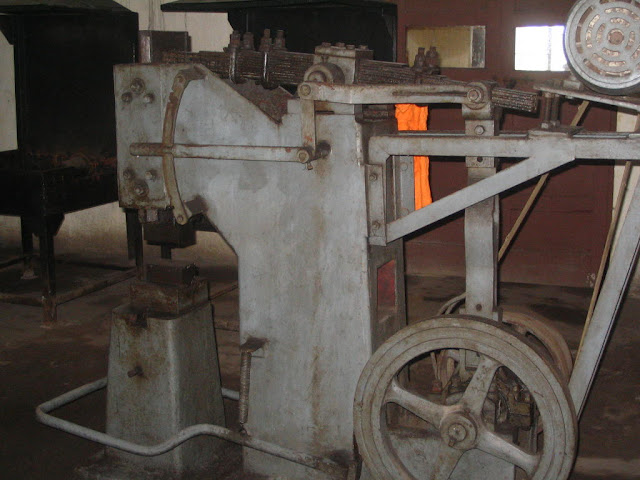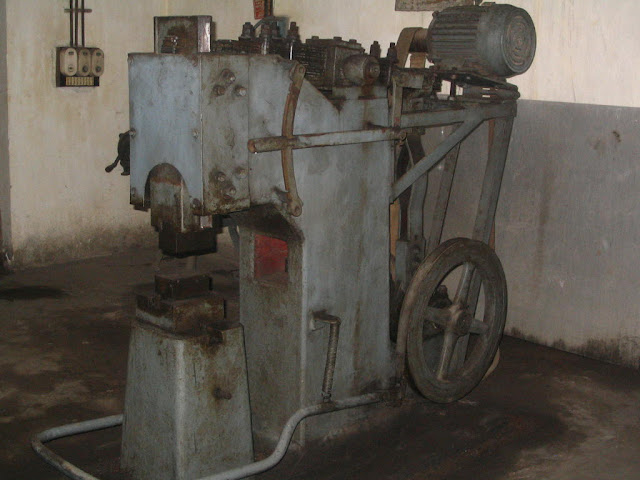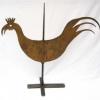-
Posts
1,120 -
Joined
-
Last visited
Content Type
Profiles
Forums
Articles
Gallery
Downloads
Events
Posts posted by MLMartin
-
-
I think the hammer is vary similar to this one.


-
Hey Michael, looks like a helve. if you look at the back of the top spring, you can see that the contact arm from the motor slides forward and backward. the spring on top has a slight curve to it, so when you slide back, or forward on the connection you get a long or shorter stroke
errr i think -
thats some big prices out there. when i picked up my 500lb PW thats broken off at the hardy the fellow had been asking 2100 for weeks, then 1900, then 1600, i sent him and e mail offering 500, and explained that because the tail end had been broken off the value was greatly decreased, and that 500 was all i believed it was worth in the condition. I met up with the fellow and he was vary understanding and glad to take the 500 for it.
Seems people always ask crazy high prices, i just try and be calm with them and enplane why things are not worth so much. -
Came across this forging hammer the other day, looks pretty nice. Wish they were in the sates! maybe we can get some imported to the US
http://www.maneklalexports.com/index.html
at the top left of the page, click the machine tool button, then scroll down to the presses and hammer category - mechanical forging hammer -
o this is great, please share lots of good pictures of the thing, i know it simple, but some of us need simple pictures for our simple minds! haha
Glad to see a good tool being treated well -
Great to see fellows starting so young, tell him to sitck with it and he'll be better than us all by the time hes 20!
Hello USA, Georgia -
that anvil looks Nice, glad the vinegar worked for you (Vinegar is a weak acid so will etch slowly), best of luck with the anvil!
-
Hey guys ive got some questions about refractory coatings.
First off ive used many gas forges, and built a few, so im somewhat familiar with them. All my forges have been metal shell with Kayowoll inside. ive just built a new forge and know that i need to coat the inside with some kind of coating, all my other forges were just left as kayowoll. The woll is about 1 1/2 inch thick. I plan to use satanite as the inside coating,how much satanite do you all think ill need to coat the inside. Also how dose everyone prepare this stuff? how think of a coating? how to mix it up? ext?
The forge inside is 4in by 4in and 6in long, + doors
Thanks everyone
ya my math sounded realy strange, I was thinking about it in this way 4in times 4in times 6in - time 4 walls. plus 6in times 6in times 2 doors
ahhhh i only divided it all by 12, not by a square foot, i knew something sounded crazy, only 1sft -
If you are using a gas forge you can use it inside without a hood, just make sure there is GOOD ventilation (air movement), tall ceilings are good. i guess you can look at it this way, if you can run a small generator inside the barn without choking yourself on exhaust, then a small gas forge should be just fine.
-
when you say faced, do you mean that some one with and grinder, or a mill cut away the top steel plate until it was perfectly flat?
if you take some good pictures of the anvil it may help us to know whats going on. you can also lay the anvil on its side and clean the top side (where you think the face weld line should be)and pore a little vinegar on it, after a few hours or a day the vinegar will etch a little line were the weld is, if it has not been cut off. -
I sure hope so, because I am using Kayne and Son stuff to speed up production. I make a LOT of candle holders in the Pennsylvania/Dutch tradition. But I am glad I learned the way I did even though it took a bit longer than in the old days. As far as I know, I am the youngest one trained in the traditional way; I am almost 44.
What do you mean by your the youngest trained in the traditional way? trained in what style, to what time period? -
I sure am ready for a good 80lb Helve
-
looks like an early Fisher anvil, you can still just barley make out the eagle (Eagle Fisher anvil symbol) on the side that is worn. I dont think that the deformation in one side is a casting flaw, more than likely some fellow was making chisels or picks or some type of pointed tool, after making it it was fairly common for a smith to strike the side of the anvil to test the point by how deep it cut into the anvil, you can see where the smith more than likely was testing chisels in one of the corners running to the feet.
looks like a nice anvil, enjoy -
-
great looking stuff
-
Ahhhhh more big toys, i want to come play, i mean ummmmm work.....
-
Opps That was me (Mack) hearing my CB750 calling from GA, not my sweetheart in the above post, have to remember to sine her out when i use her computer
M Martin -
great video, thanks for sharing
-
Well the weight is certainly not the total say on anvils. what matters much more is how much mass is under the main working face, if you use a typical London pattern anvil much of the mass is strung out over a long horn and heel. having most of the mass of an anvil under the face will help in the force of your blows. so by using a colonial anvil like the ones Jymm Hoffman makes every hammer blow will produce much more work than a anvil thats all strung out.
soooooo it all comes down to mass under your hammer. think of it this way, you have a block of steel that's 2 inch thick by 1 foot square. you could lay it flat and have a anvil face that was 1 foot square but only 2 inch of mass thick. this would not work well, being so thin would cause your hammers force to pass though and into the stump vary fast. now if you took the same block and stood it on end you would only have a anvil face that was 2 inch by 1 foot, but you would have a foot of mass under the face, this would provide a great amount of mass and work well. -
whats with the man standing admittedly to the left of the hammer in the picture, you can kinda see though him, ghost of some long gone operator?
-
Those look great, ill have to make a pair in a few weeks
Thank you for shearing! -
When at the end of the day you rest your hand on your anvil and burn yourself, takes alot of hard swings and some large iron to bring a 175lb anvil to an uncomfortable temperature
-
ugggg i want to playyyyyyy. the hammers looking great, glad to see ya got it running!
Mack -
thanks for sharing, i would have never though about welding on a wheel n tire, who knew the temp would rise soooo fast


I got a good anvil
in Anvils, Swage Blocks, and Mandrels
Posted
looks like a hay budden, youll have fun with that. use a angle grinder with a wire brush attachment and remove that paint from the face and youll be happier while forging, burning paint tends to smell less than pleasant, or just use some sand paper by hand to remove paint.
there is a few forums topics on the site with good stands-stumps for anvils, have a look and chose whats best for your anvil.
most of all, forge hot iron on it!